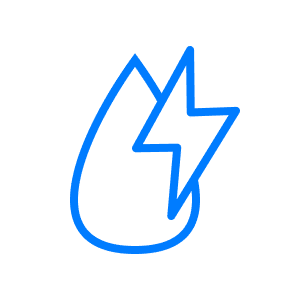It can be challenging for mortgage businesses to measure success when it comes to customer experience. However, it’s essential; because how well your company meets or exceeds borrower expectations is key to maintaining profitability and increasing total revenue.
Which mortgage industry KPIs are most important?
Loan originators should use the following mortgage lending Key Performance Indicators (KPIs) to measure customer experience success with borrowers and identify overall efficiency.
The average number of customers who recommend the company to a friend or colleague.
This metric provides big-picture insight into the borrower experience. If not many customers suggest that others purchase mortgage loans with your company, it’s probably because their expectations weren’t met during the loan or post-application process.
The percentage of customers who would do business with you again.
It is always cheaper to retain customers rather than acquire new ones, so a mortgage business that succeeds in keeping borrowers long-term will gain a competitive advantage. Lenders who want to measure the success of a customer service approach should look closely at this critical metric.
Rapid response rate.
This measures how long it takes for a chatbot or human agent to answer a borrower’’s question. If they do not respond quickly enough, it can cost your company business, especially in the fast-paced online world where more people are turning to self-service.
Significant match rate.
This metric represents the number of times that a chatbot or human agent gets it right. For instance, if a borrower asks about what loans they qualify for, and answer is unrelated to loan types , this rate is less than 100%.
Quantity of questions answered.
It’s essential to have a large number of questions from borrowers answered because it means a customer service team can help multiple customers simultaneously.
The average time it takes for a borrower to get approved for a loan.
What is the average cycle time of a loan application? The average time is important when determining how quickly a mortgage lending company can complete its process. If a company has shorter turnaround times, it means that the loan approval process is more efficient and has less potential for costly errors.
Average origination value.
This metric tracks the value of funded loans originated by a mortgage business and the number of loans. The average origination value percentage shows how much money is made on each closed loan.
The cost to close an average loan.
If a lender can’t manage expenses, their business won’t last long. Use this metric to determine how much it costs lenders on average to close a loan. A low average value indicates that the lender is cost-effective at helping customers buy homes.
Application approval rate.
A low application approval rate indicates the company is processing many unqualified borrower applications. If the application approval rate of funded loans is high, it generally means that the lender is doing an excellent job of qualifying borrowers before they apply for loans, saving them time and money.
Loan profitability.
Loan profitability is calculated by taking the average loan size and subtracting closing costs, origination fees, and occupancy and taxes. Loan profitability indicates whether a company’s loans are generating revenue.
Support automation for lenders.
The mortgage origination process can be long and costly. Loan officers are frequently overwhelmed with document-gathering and other administrative tasks.
When this happens, a lender’s ability to provide a superior customer experience can fall by the wayside. The lending team is simply too busy to follow up with every prospective borrower and ensure that their loan pipeline is full.
A platform like Capacity can resolve these problems by automating repetitive administrative tasks, including document collection, underwriting, compliance checks, and post-application processes.
This empowers loan officers to get more loan applications done in a shorter time. Automation also makes it easier to ensure that no borrower slips through the cracks and significantly lowers the cost to close rate for approved applications.
Using support automation to understand key performance indicators.
Using a support automation platform like Capacity can help lenders improve key metrics like rapid response rate, significant match rate, and quantity of questions answered.
Here’s how:
- Rapid response rate: Capacity equips lenders with a chatbot that can answer prospective borrower inquiries in 1-2 seconds. Unlike human agents, a chatbot never needs a sick day, vacation day, or other time off. This means that borrowers who have questions will receive a response almost immediately, thus improving the rapid response rate.
- Significant match rate: It’s useless having a fast-responding chatbot if the answers it provides aren’t accurate. At Capacity, we define “good match rates” at 80%. This means the platform can accurately answer more than 80% of questions without human intervention.
- Quantity of questions answered: A chatbot can answer an enormous quantity of questions. This means that mortgage companies can always have an agent available to assist qualified borrowers who wish to chat. The impact of this on lenders is huge. The more questions that Capacity answers on behalf of the business, the more team members are freed up to do more meaningful work, like creating relationships with referral partners.




